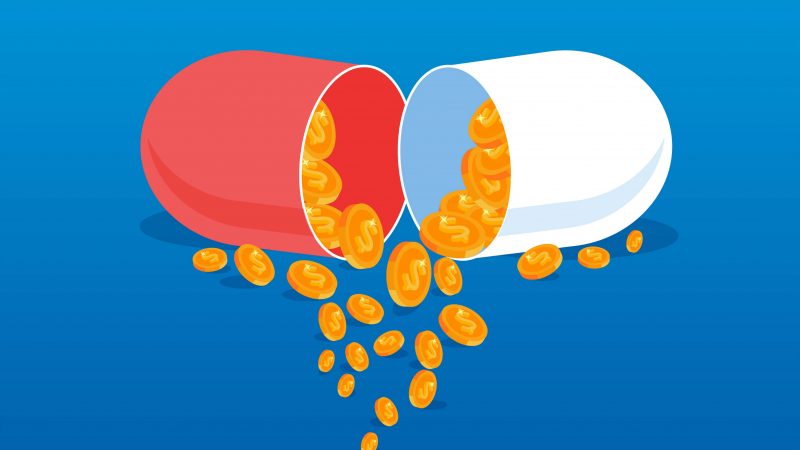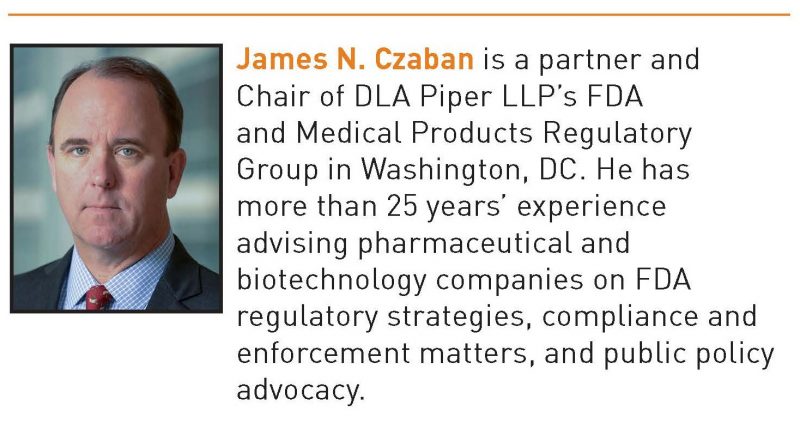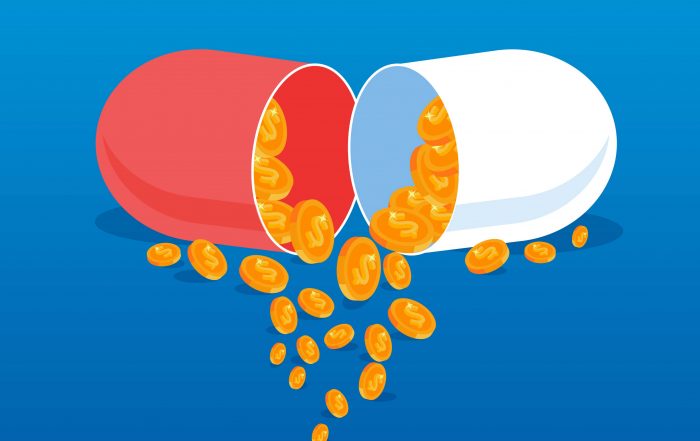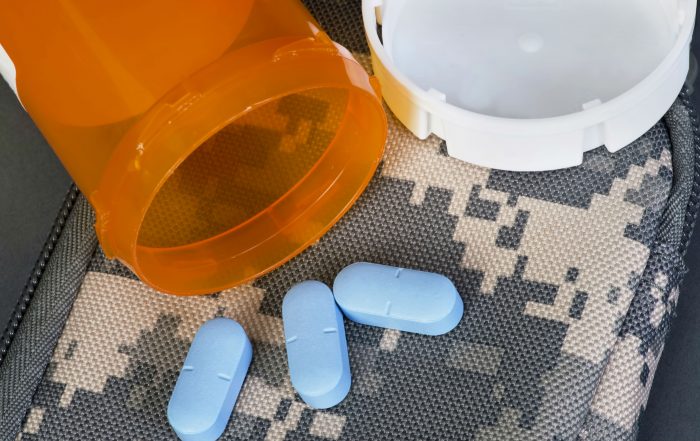
For FDA, Addressing Drug Pricing Is a Matter of Doing Its Job Better
by James N. Czaban
Perhaps no public policy issue has generated a more-sustained high-intensity focus by political leaders, the media, industry, and American consumers over the past decade than the issue of how drugs are priced and paid for in the United States. The issue was a lightning rod in the 2016 presidential election, even more so than it was in prior election cycles, and its staying power seems only to have increased since. As was illustrated by the analyses and infographics accompanying President Trump’s Blueprint to Lower Drug Prices and Reduce Out-of-Pocket Costs, the U.S. healthcare system’s mechanisms for pricing and reimbursing the cost of prescription drugs can be, and has been, characterized as byzantine and inscrutable, owing only in part to the sheer number of entities and stakeholders whose actions and decisions impact the pricing equation.
Counterintuitively—at least to food and drug law practitioners and regulated-industry experts, if not to the average person—one such entity with the power to impact drug pricing is the Food and Drug Administration (FDA). This article offers a brief summary and analysis of key actions and initiatives being undertaken by FDA under the leadership of Commissioner Scott Gottlieb to creatively employ the agency’s existing authorities in ways designed to lower drug-related healthcare costs.
FDA Lacks Direct Authority over Drug Pricing
At the outset it is important to note, as Dr. Gottlieb and others before him have recognized, that FDA doesn’t have a direct role in drug pricing. Indeed, of the core provisions of the Federal Food, Drug and Cosmetic Act (FDCA) where such direct pricing authority might logically reside, such authority is starkly absent. For example, section 505(b)(1) of the Act requires that a New Drug Application contain, among other things, full clinical data on the safety and efficacy of the drug, detailed information on its composition and manufacturing processes, and the drug’s proposed labeling, but nowhere does this section require an applicant to provide FDA with the proposed pricing of the drug.
After reviewing an NDA, FDA may refuse to approve it pursuant to section 505(d) if, among other things, the sponsor failed to submit adequate clinical study data, the submitted data showed the drug to be unsafe or ineffective, the labeling is false or misleading, or the manufacturing facilities or processes are inadequate to assure its safety. Nowhere in this section, however, is there any authority for FDA to refuse to approve a new drug based on a conclusion that the pricing of the drug is or would be unreasonable.
And, more broadly, the FDCA contains a long list of “prohibited acts” in section 301, including the sale of a misbranded or adulterated drug, the sale of an unapproved drug, failure to submit required adverse event reports, failure to register a drug manufacturing establishment, and the submission of false or misleading information to the agency. Nowhere, however, does section 301 or any other part of the FDCA prohibit selling a drug at any particular price (other than the prohibited sale of drug samples at any price). Moreover, notwithstanding various drug price and discount reporting requirements that exist in other laws administered by other agencies, the FDCA nowhere requires reporting of, nor prohibits the failure to report, drug prices or price increases to FDA.
In sum, nowhere does the FDCA give FDA authority to take action, or refrain from taking action, based on the price charged for a drug.
What is FDA Doing to Impact Drug Pricing?
So the question is, what can FDA do regarding drug pricing? The answer, based on what the agency is already doing, is that FDA can adopt systemic policies and processes that may indirectly impact competition (and thus pricing for genericized drugs), and that impact overall drug spending on a system-wide basis. The emphasis on the indirect and system-wide impacts is an important contrast to FDA’s inability to impose any drug-specific price controls or directly impact any specific patient’s out-of-pocket drug costs. Since early in his tenure, Dr. Gottlieb has pursued such systemic reforms in multiple ways, in each case highlighting the positive pricing impact that can be achieved through enhanced market competition and greater regulatory efficiency. The key initiatives are discussed below.
Focus on Competition
The Drug Competition Action Plan (DCAP) is a multi-prong program to reform and streamline the generic drug regulatory system to expedite generic competition and thereby lower prices. As the President’s Drug Pricing Blueprint explains, the DCAP focuses on three key areas: “(1) improving the efficiency of the generic drug development, review, and approval process; (2) maximizing scientific and regulatory clarity with respect to complex generic drugs; and (3) closing loopholes that allow brand-name drug companies to ‘game’ FDA rules in ways that forestall the generic competition….” FDA’s implementation of the DCAP thus far has resulted in the publication of several Guidances and internal organizational and process improvement efforts.
At a high level of process generality, the Good ANDA Submission Practices Guidance, plus a related MaPP, Good Abbreviated New Drug Application Assessment Practices, are designed to assist generic applicants to avoid common ANDA deficiencies to reduce the number of multi-cycle ANDA reviews, and to “increase [the] operational efficiency and effectiveness” of the generic drug review and approval process. The result, FDA hopes, is faster approval of new generic products that will increase competition and reduce costs to the system and to patients. Of course, that has been the goal of the Hatch-Waxman amendments for the past 34 years, but by focusing on improvements to the process, FDA and the administration can and do claim to be taking action to reduce drug prices.
FDA has also highlighted the potential drug pricing benefits of its obligation under the Generic Drug User Fee Amendments of 2017 (GDUFA II) to engage in efforts to facilitate the development and approval of generic versions of complex drug products, which often pose technical difficulties that can deter commercialization efforts and delay development and approvals. Thus, FDA issued the Guidance, Formal Meetings Between FDA and ANDA Applicants of Complex Products Under GDUFA to allow applicants to request generic product development meetings for complex products to discuss “specific scientific issues or questions (e.g., a proposed study design, alternative approach, or additional study expectations),” after which “FDA will provide targeted advice regarding an ongoing ANDA development program.” Relatedly, FDA has also published a more technical Guidance, ANDAs for Certain Highly Purified Synthetic Peptide Drug Products That Refer to Listed Drugs of rDNA Origin, to assist applicants in developing the necessary data and analytical methods to “adequately characterize[] peptide products for submission in an ANDA.” As with the ANDA submission Guidance and the ANDA assessment MaPP, the complex ANDA Guidances represent efforts by FDA to do its job better, rather than radical new programs. But, by highlighting these efforts as part of the DCAP, the agency seeks to more effectively communicate the drug pricing benefits that have long been built into the generic drug regulatory system but which can be improved by regulatory reform efforts.
Another element of the DCAP is FDA’s effort, as required under the FDA Reauthorization Act of 2017 (FDARA), to encourage and facilitate the development of generic versions of drug products which, despite having no remaining patent or regulatory exclusivity protection, are not yet subject to generic competition. FDA has sought to achieve this goal by publishing a list of “off-patent, off-exclusivity branded drugs without approved generics….to improve transparency and encourage the development and submission of ANDAs in markets with limited competition.” Relatedly, FDA revised its MaPP, Prioritization of the Review of Original ANDAs, Amendments, and Supplements, “to prioritize review of generic drug applications until there are three generics approved for a brand product.” And here again, FDA has made the case that by doing its job better, it will make an impact on drug pricing.
The Biosimilar Action Plan (BAP), formally announced on July 18, 2018, is an effort to reform and streamline the biosimilar regulatory system to accelerate cost-saving competition in the market for complex biological drug products. As Dr. Gottlieb stated in a speech announcing the BAP, “enabling a path to competition for biologics from biosimilars is a key to reducing costs and to facilitating more innovation.”
The biosimilar approval pathway was created by statute in 2010, yet nearly eight years later, FDA has approved only a dozen biosimilar applications, and only three of those approved products are currently being marketed. Industry and FDA are frustrated by this pace of progress, and the agency is therefore beginning to look to ways to simplify the development process and approval criteria without compromising the safety or efficacy of any biosimilar products it approves.
An initial pre-BAP step toward this goal was FDA’s withdrawal of a highly technical draft Guidance, Statistical Approaches to Evaluate Analytical Similarity. In announcing the withdrawal of the Guidance, Dr. Gottlieb sounded the same theme observed above with respect to the DCAP, namely that by doing its job better and more efficiently, FDA can contribute to lower drug prices. According to Dr. Gottlieb, the agency seeks to “ensure our guidance takes into consideration the most current and relevant science….[and that by] supporting the more efficient development of biosimilars over the long term and helping reduce barriers to bringing these products to market, we can help ensure patients get access to affordable, safe and effective treatment options.”
The BAP describes 11 steps FDA plans to take to achieve its stated goals, with the steps bundled under “four key areas: (1) improving the efficiency of the biosimilar and interchangeable product development and approval process; (2) maximizing scientific and regulatory clarity….(3) developing effective communications to improve understanding of biosimilars among patients, clinicians, and payors; and (4) supporting market competition by reducing gaming of FDA requirements or other attempts to unfairly delay competition.”
One of the 11 steps that has attracted early attention and debate is the possibility of allowing biosimilar applications to rely on foreign-approved reference products. As stated in the BAP, FDA is “exploring data sharing arrangements [with regulators in other countries] that can give us better insights into biosimilars’ real world safety and efficacy and, in some circumstances, facilitate the increased use of non-U.S. licensed comparator products in certain studies to support an application” for a U.S. biosimilar product. The cost-savings for such an approach would come, according to Dr. Gottlieb, from the fact that the use of ex-U.S. biologics as a comparator product “can lower the cost of clinical studies since many of these products can be procured more easily, and cheaply, in European and Asian markets.”
Calling Out Alleged “Gaming” of the REMS System. Another element of FDA’s drug pricing strategy involves efforts to call-out and deter certain activities by sponsors of innovator drug products that are said to hinder the development and approval of a subset of generic products. In particular, a small number of drug products are subject to a highly restrictive category of Risk Evaluation and Mitigation Strategies (REMS) which require a tightly-controlled distribution system to safeguard against the serious risks of such products. Under such closed distribution REMS, a generic applicant is unable to simply acquire the reference drug on the open market for use in bioequivalence testing, and in a smaller subset of cases, RLD sponsors have not gone outside the REMS system to provide generic applicants with samples for testing. This issue has been the subject of multiple congressional hearings and multiple bills have been introduced, but not enacted, to address the issue.
In response, and as part of DCAP, FDA has chosen to publicly highlight this situation as a “gaming” of the system, and has published a web page, “Reference Listed Drug (RLD) Access Inquiries,” listing drugs for which generic sponsor access has reportedly been impacted. The agency has also published a Guidance, Development of a Shared System REMS, to address a related set of issues that arises when innovator and generic drug sponsors are unable to reach agreement on the implementation of a single shared distribution system, as generally required, for applicable REMS drugs. As with FDA’s other drug pricing related efforts, the REMS initiatives are positioned as a way to indirectly reduce drug pricing by increasing competition through increased and expedited generic approvals.
Drug Importation as a means to lower U.S. drug costs has been a controversial issue for many years, and despite legislative efforts by some members of Congress to allow widespread importation of drugs from countries with price control systems, no such policy scheme has ever been deemed adequate to assure the safety and effectiveness of the drugs to be imported. Thus, FDA caught the immediate attention of stakeholders in the healthcare system when it announced on July 19, 2018 the formation of an internal working group “to explore various policy frameworks that…would involve the importation of drugs…that would be suitable substitutes for the FDA-approved version of the medically-necessary drugs.” The potential importation system would, as initially described, apply only to sole-source drug products for which there are no existing patents or regulatory exclusivities. Notably, however, one of the criteria that could trigger the permitted importation of a drug would be its pricing, specifically any “sudden, significant price increases that close off channels of availability.” A natural question that has already been raised by stakeholders and other observers, however, is whether the narrow initial approach, as described, might later be expanded by the current or future administrations to encompass a broader array of drug products, or to apply based on pricing that is deemed “excessive” regardless of any recent price increases.
Analysis and Commentary. FDA’s focus on increasing generic and biosimilar competition as a means for targeting drug pricing concerns may not, for the most part, constitute a revolution, but rather an aggressive and creative evolution, of the agency’s core drug regulatory duties. One can view many of these efforts as an agency undertaking efforts to improve its existing processes and programs—i.e., simply doing its job better. Indeed, some elements of the DCAP, such as working with industry to reduce multi-cycle generic reviews, have been the specific focus of past FDA Commissioners, but with limited success. Whether the creativity and energy currently being brought to bear in pursuit of this mission will breed greater success, and with it an impact on drug costs, remains to be seen.
However, the focus on systemic reforms targeting overall costs to the healthcare system comes with unavoidable limitations. For example, this approach will, at best, have a diffuse impact on drug costs because the overwhelming majority of drugs dispensed today are already generics, so increasing an already high generic utilization rate may not feel like a major improvement, even if the nominal dollar value of the change is significant. Moreover, this approach will have a delayed impact on specific drugs’ costs, because generic competition is still subject to delay based on statutory patent and regulatory exclusivity rights, and FDA’s approach does not and cannot target the pricing of specific drugs that remain on-patent without generic competition. Finally, despite the potential to generate meaningful savings through a systemic- and process-based approach, such an approach is far less conducive to media attention or political talking points, although the agency has made a sustained and concerted effort to communicating the potential benefits of its efforts.
Focus on Innovation
Not all of FDA’s drug cost-targeting initiatives relate to enhancing generic competition. The agency has also been engaged in reform efforts to enhance innovation and the new drug approval process as a means to attack drug cost concerns. Industry and neutral observers have long lamented the incredibly high cost of successfully bringing a new drug to market (current estimates range as high as $2 billion) and the high failure rate for novel drug product candidates. The regulatory burdens of the FDA approval process are a key driver in these continually escalating costs, and FDA has been pursuing regulatory reforms designed to reduce the cost and the uncertainty of developing novel treatments. As Dr. Gottlieb remarked in a June 2018 speech, there is a pressing “need to modernize drug development to harness the full medical potential of this rapidly advancing science, while ensuring that innovation remains affordable for patients. If outdated regulations delay or derail the development of innovative, safe and effective products, patients suffer. And if FDA-approved drugs are priced out of reach of patients, then the full benefits of innovation won’t be realized.”
Among the new-drug initiatives being implemented by FDA, in some cases pursuant to mandates in the 21st Century Cures Act (Cures Act), are policies to permit the greater use of use of adaptive clinical trial designs—instead of rigid adherence to the traditional linear 3-phase clinical trial approach—whereby clinical trials can be modified mid-stream based on emerging data while still being treated by FDA as adequate and well-controlled studies supportive of regulatory approval. This approach has been increasingly used in oncology and FDA’s approach targets the expanded adoption of adaptive designs in other therapeutic areas. In addition, FDA is seeking to facilitate the increased use and regulatory acceptance of surrogate endpoints in clinical trials as a means to speed approval of promising new drugs. Here too, oncology has been the stalking horse for surrogate marker endpoints, but the use of genetic or protein biomarker endpoints in Alzheimer’s drug trials, for example, offers the compelling hope of reversing the trend of major drug companies curtailing or wholly exiting the Alzheimer’s research space due to the burdensome, and some say unrealistic, clinical trial design requirements for Alzheimer’s disease drugs.
FDA has also been pursuing reform policies whose target is not reduction of cost as a nominal figure, but rather enhancing the value of drugs utilized by patients. A powerful emerging trend in medical care and payment policies is the use of “value-based contracting” wherein the selection, pricing, and reimbursement levels of particular drugs can be tied to the demonstrated clinical value of the drug, either in absolute terms (a drug that is a permanent cure for a previously incurable chronic condition can rationally be priced far higher than drugs used to merely manage the condition over the patient’s lifetime), or in relative terms compared to other competing drugs. In the latter scenario, if a drug sponsor can show its drug to be meaningfully more effective than a competing drug, paying more for that drug than for the competing product may actually reduce overall healthcare spending.
While reimbursement policies generally, and value-based contracting in its various specific forms, are outside the direct purview of FDA, the agency does serve an indispensable role as the expert medical agency with the capabilities to assess and advise on a drug’s absolute and relative effectiveness, and thus of its clinical value. But Dr. Gottlieb has also acknowledged that “FDA needs to think of itself as a curator of information. Not just an arbiter, where a single truth standard is secured to a fixed orthodoxy. The latter concept is increasingly at odds with the way decisions are being made by others who depend on reliable evidence to guide their paths, including doctors and health plans.” These functions are essential to implementation of any value-based pricing or reimbursement system, and FDA is taking actions to better serve those critical, if somewhat limited, roles.
For example, the agency and Dr. Gottlieb are embracing the power and utility of using Real World Evidence (RWE) throughout the lifecycle of a drug product. As Dr. Gottlieb stated in a recent speech to the National Academy of Sciences, “[r]eal world evidence is becoming especially prominent as a way to make decisions on coverage and reimbursement,” and, he continued, “[t]he FDA’s interest in advancing the adoption of RWE in support of its programs remains a top priority. And it’s a high priority of mine.” RWE also plays a prominent role in another value-related FDA initiative, namely the final Guidances, Drug and Device Manufacturer Communications With Payors, Formulary Committees, and Similar Entities, and Medical Product Communications That Are Consistent With the FDA-Required Labeling.
These two Guidances permit broader dissemination of clinical information, including RWE, by manufacturers about their products where the information is not expressly approved by FDA. The Guidances have been in the works for several years as a result on ongoing litigation and policy advocacy in favor of more liberalized off-label FDA policies, but in finalizing the Guidances in June 2018, FDA emphasized other price-related purposes and benefits to the Guidances. Namely, FDA has stated, the Payor Guidance is designed with a goal “to advance public health benefits such as increased cost savings from informed and appropriate coverage and reimbursement decisions…by helping to reduce the overall cost of providing these benefits to patients.” Moreover, the Consistent With Labeling Guidance is cited by FDA as an important tool to generate information “to serve as the basis for value-based contracts where reimbursement may hinge on measures of benefit that aren’t expressly described in the drug’s label.” Thus, in this context, FDA has decided that the most active and effective role it can take to facilitate value-based, cost-saving drug pricing systems to mostly get out of the way of the fulsome sharing and dissemination of the broadest range of clinically relevant information.
FDA’s pricing-conscious reform efforts are not limited to prescription drugs and biologics. On July 17, 2018, FDA unveiled a new Draft Guidance, Innovative Approaches for Nonprescription Drug Products, which describes two new approaches to OTC drug regulation to “increase[e] the types of drug products consumers can access and use that would otherwise only be available by prescription.” According to Dr. Gottlieb these approaches “will contribute to lower costs for our health care system overall and provide greater efficiency and empowerment for consumers by increasing the availability of certain products that would otherwise be available only by prescription.” The first approach would be for FDA to approve additional labeling, beyond what is included in the familiar OTC Drug Facts Labeling (DFL), such as leaflets or documents in the drug’s carton or container, interactive information displays at point of sale, or information provided by way of a website or mobile apps. The second proposed approach would be to impose additional “conditions for safe and effective use”—in essence a type of REMS system for certain OTC drugs. Such conditions of use might include a requirement that a patient take a self-selection test on an app to confirm the consumer is an appropriate candidate for the drug, or that the consumer view (and affirm that they have viewed) a video on how to appropriately use the drug.
Analysis and Commentary. The ability to achieve drug price reductions through new drug regulatory reforms is less obvious and direct than the connection between increased generic competition, lower individual drug costs, and lower overall spending. Enhancing innovation as a cost strategy also raises some complex and difficult questions. For example, while FDA can reduce the cost of developing and obtaining approval of a new drug, which may increase the effective period of core patent protections for the drug, what, if anything, can the agency or the administration do to require or encourage drug companies to pass any such savings along by way of reduced pricing?
Moreover, a question that has received relatively little attention is whether, assuming reduced regulatory burdens will result in more new drugs being approved, overall healthcare spending will actually increase simply because there will be more drugs available, prescribed, charged for, and subject to reimbursement? And, with respect to the possibility of switching more drugs to OTC status, the cost question is complicated by the fact that health insurance plans typically do not cover OTC drugs. Thus, while systemic cost savings can be foreseen, the impact on out-of-pocket costs to consumers is less clear.
Finally, there is always a delicate scientific line to be drawn as to the amount and quality of clinical data necessary to approve a drug as safe and effective. If FDA gets the efficacy decision wrong for a drug approved using novel trial designs or novel clinical endpoints, what is the cost—to individual patients and the healthcare system—of the consequences of patients having been treated by drugs that were in fact not effective? There are no easy answers to these questions, but at the same time this is not a reason to avoid the careful implementation of the innovation reforms being contemplated by the FDA.
Conclusion
For an agency which, as stated at the outset of this article, has no authority to take action, or refrain from taking action, based on the price charged for a drug, FDA has been an incredibly active player in the current Administration’s efforts to address concerns about drug prices. While I have suggested that some of these efforts are in essence just FDA trying to do its core job better and more efficiently, that is by no means a criticism. Rather, many of the reforms being pursued have been debated for decades but are now being implemented with a fresh way of thinking and would be noteworthy even if there were no public controversy at all about drug pricing. And, by explicitly drawing connections between improving the operation of its core medical functions and impacting the affordability of drugs for American consumers and the healthcare system, FDA has not only advanced the drug pricing debate, but is building support for, and acceptance of, regulatory changes that in other contexts and at other times might never have gotten off the ground.
Programs
Update Magazine
August/September 2018











